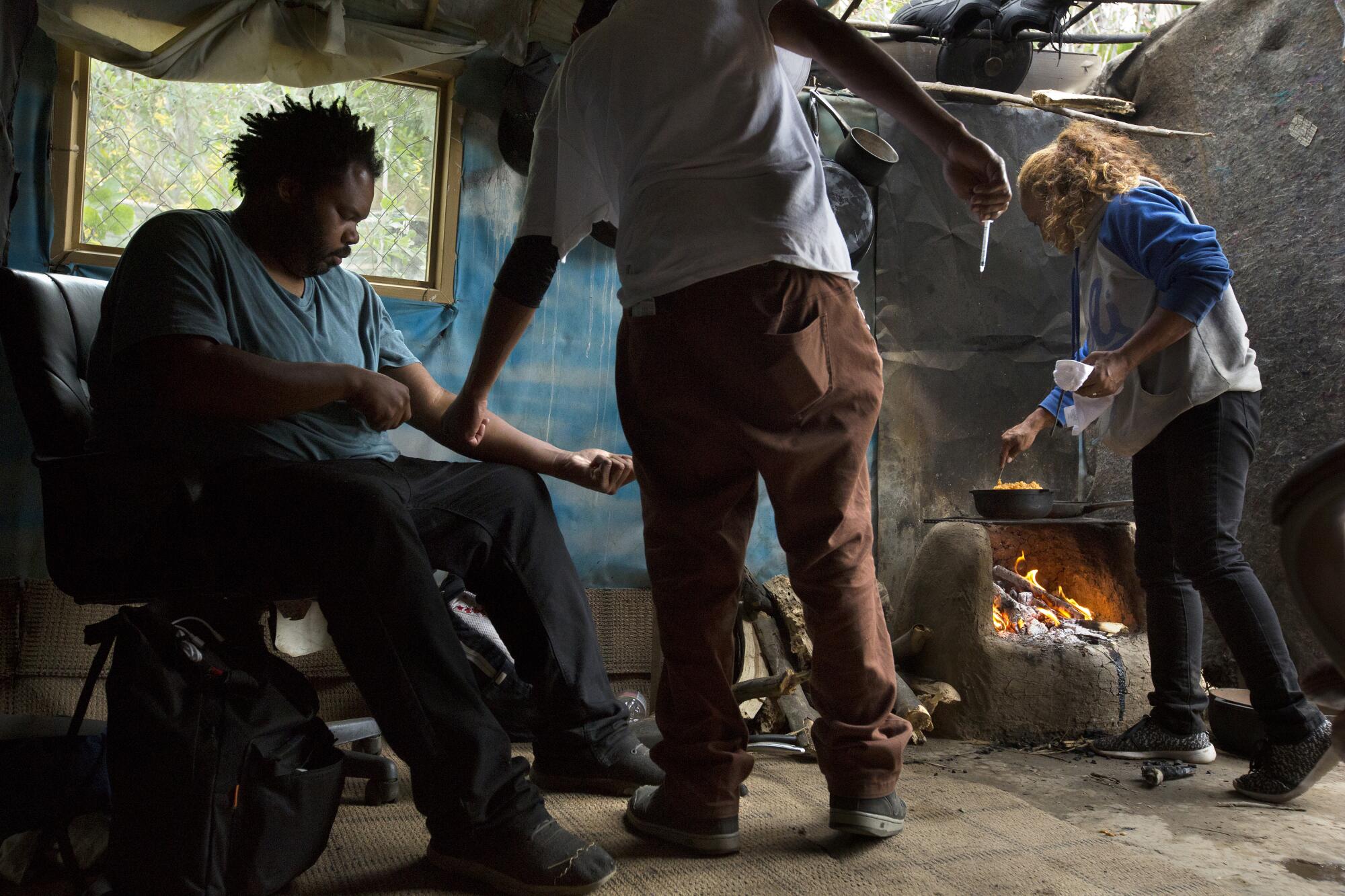
Last fall, I found myself sitting on a trash-strewn couch tucked under the elevated Orange Line busway in the Sepulveda Basin with a man who was heating a meth pipe. He goes by Rabbit and described years spent in and out of prison, falling in with a gang, and his life on the streets of the San Fernando Valley.
His bracing honesty and entrenched hopelessness were startling. I had heard many stories like his but few in such vivid detail and in such a short period of time.
I kept wanting to hear more about how he made a home for himself in the basin, where the concrete-covered Los Angeles River runs right into a densely overgrown riverbed.
“Talk to Ivan. He knows the story,” Rabbit said.
Ivan is Ivan Kashinsky — an award-winning documentary photographer, Los Angeles native and the man who first brought me to this hidden home for some of the city’s most vulnerable residents.
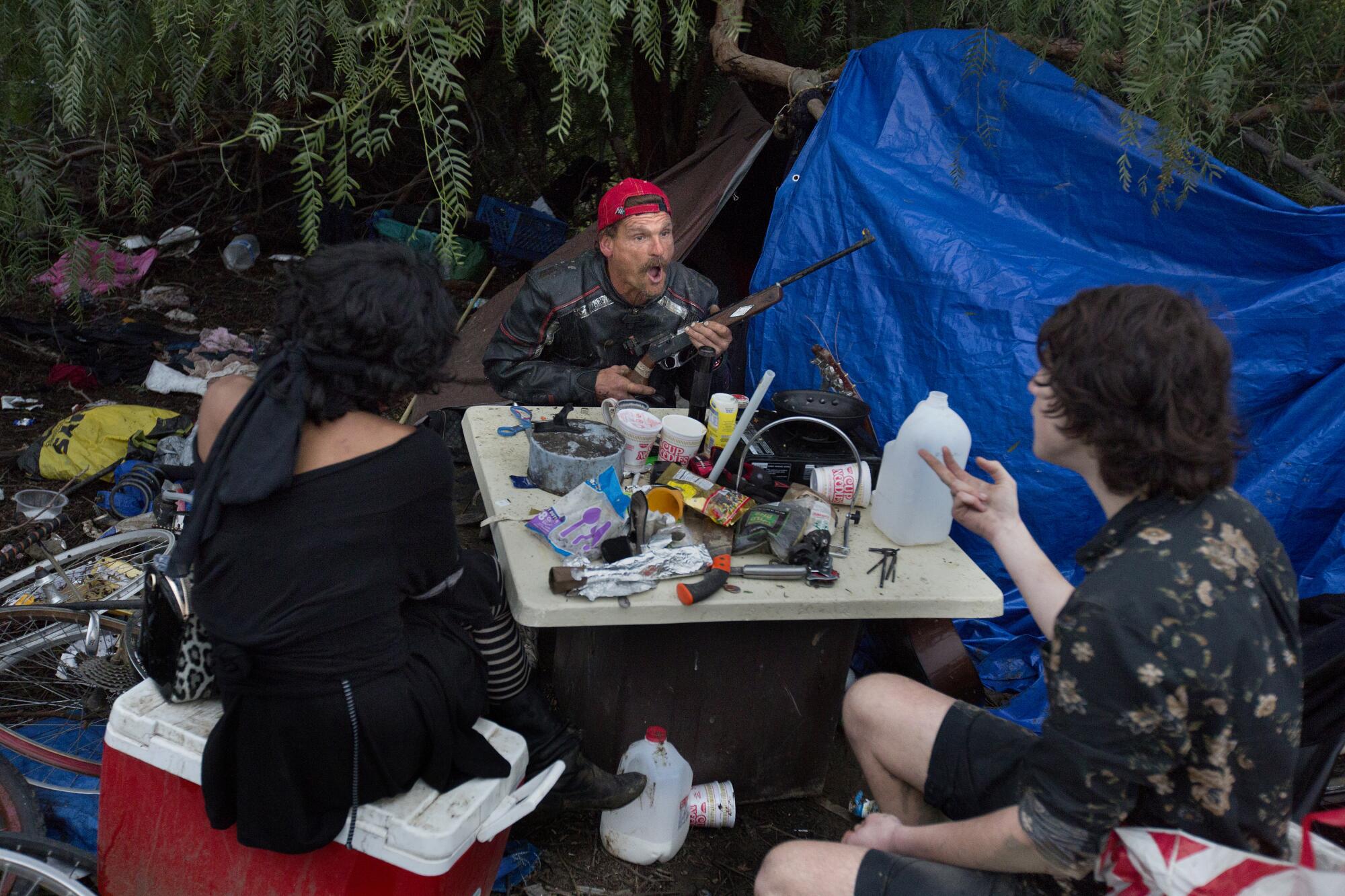
They live in large tents along riverbanks and under overpasses. They run generators and cart in water. They share food and drugs, friendship and heartbreak.
Kashinsky first came here in 2016 after returning from Ecuador, where he lived for more than a decade. When he encountered Rabbit and his cohort living near the river, he was completely absorbed and kept returning.
His visits turned into a years-long effort to document the lives of homeless people in the Sepulveda Basin in a project titled “Where the Concrete Meets the Jungle.”
With time, Kashinsky began to realize that many of these people easily blended into society, that they were easy to overlook.
“I felt like me being there kind of showed that somebody cared about their situation,” Kashinsky said.
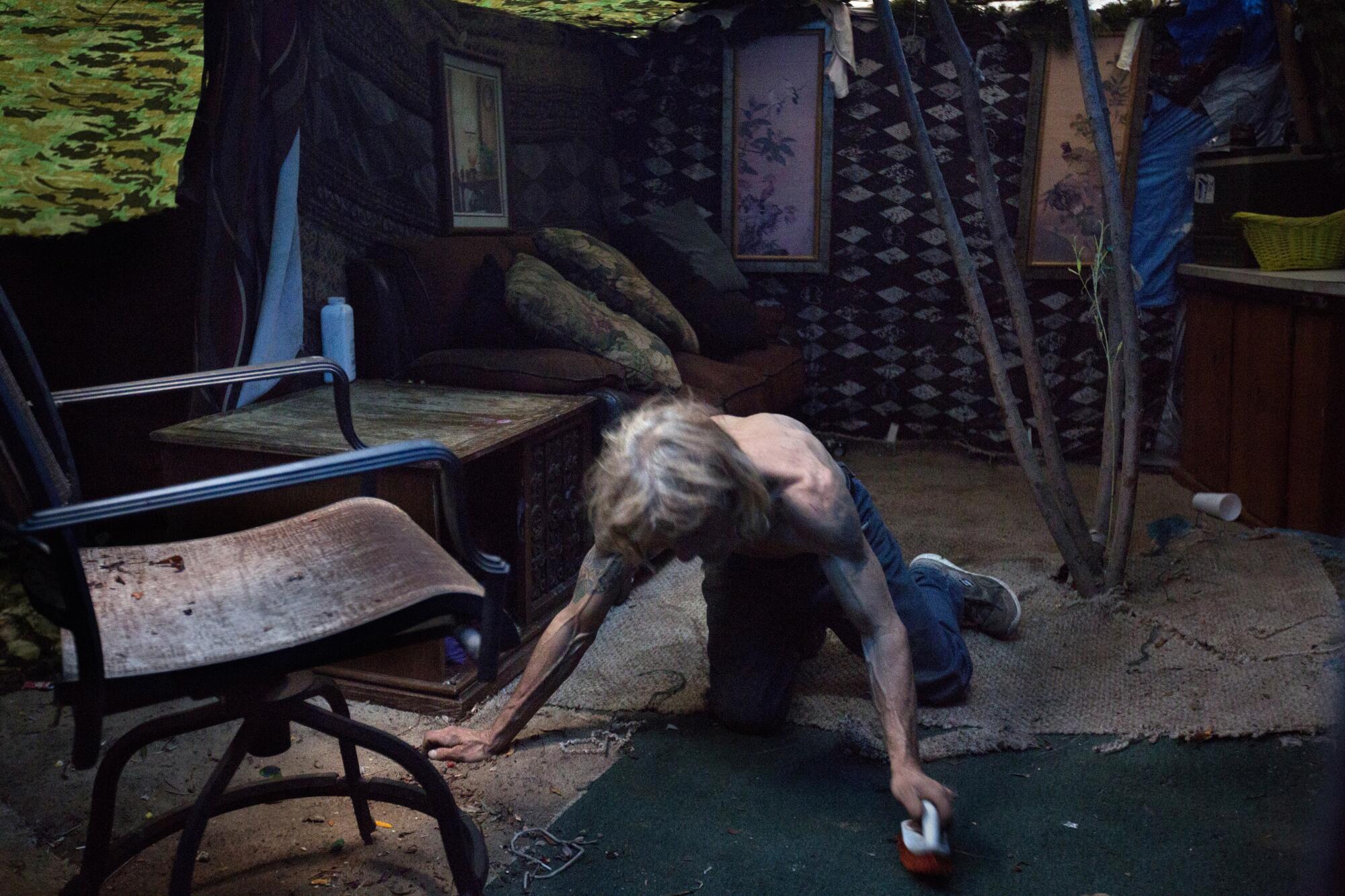
“It almost felt like they wanted to be documented because they’re almost invisible. Nobody wanted to look at them. Everybody turns their heads when they’re walking down the street. They’re kind of like these untouchables almost.”
Kashinsky introduced me to people whose lives had been turned upside down by financial distress, mental tumult and addiction. He also ensured that I heard stories of resilience: the man who managed to shake a meth addiction and move to Arizona to be with his newborn child and wife, and the people who came together to support one another after a fire ripped through their encampment, destroying many of their belongings.
Through the years, in between assignments that took him all across the world, Kashinsky kept coming back to the basin. He kept listening and he kept taking photos. These pictures juxtapose the stillness you might see in an image of a remote vista with the jarringly raw social commentary that is a sad reality in the city with one of the largest homeless populations in the United States.
“I documented tribes in the Amazon, but these are people that were born in the same valley as me,” Kashinsky, 42, said. “Maybe this is even more appropriate for me to be documenting. Like we come from similar roots in a way. This could be somebody I went to high school with.”
Kashinsky followed his subjects into hotels that the county had secured for them at the outset of the pandemic and documented how the coronavirus changed their lives.
Although he’d dreamed of walking the whole Los Angeles River, taking photos along the way, to reacquaint himself with his home, it turned out meeting people like Rabbit provided a deeper understanding of how many Angelenos now live — and a series of indelible images.
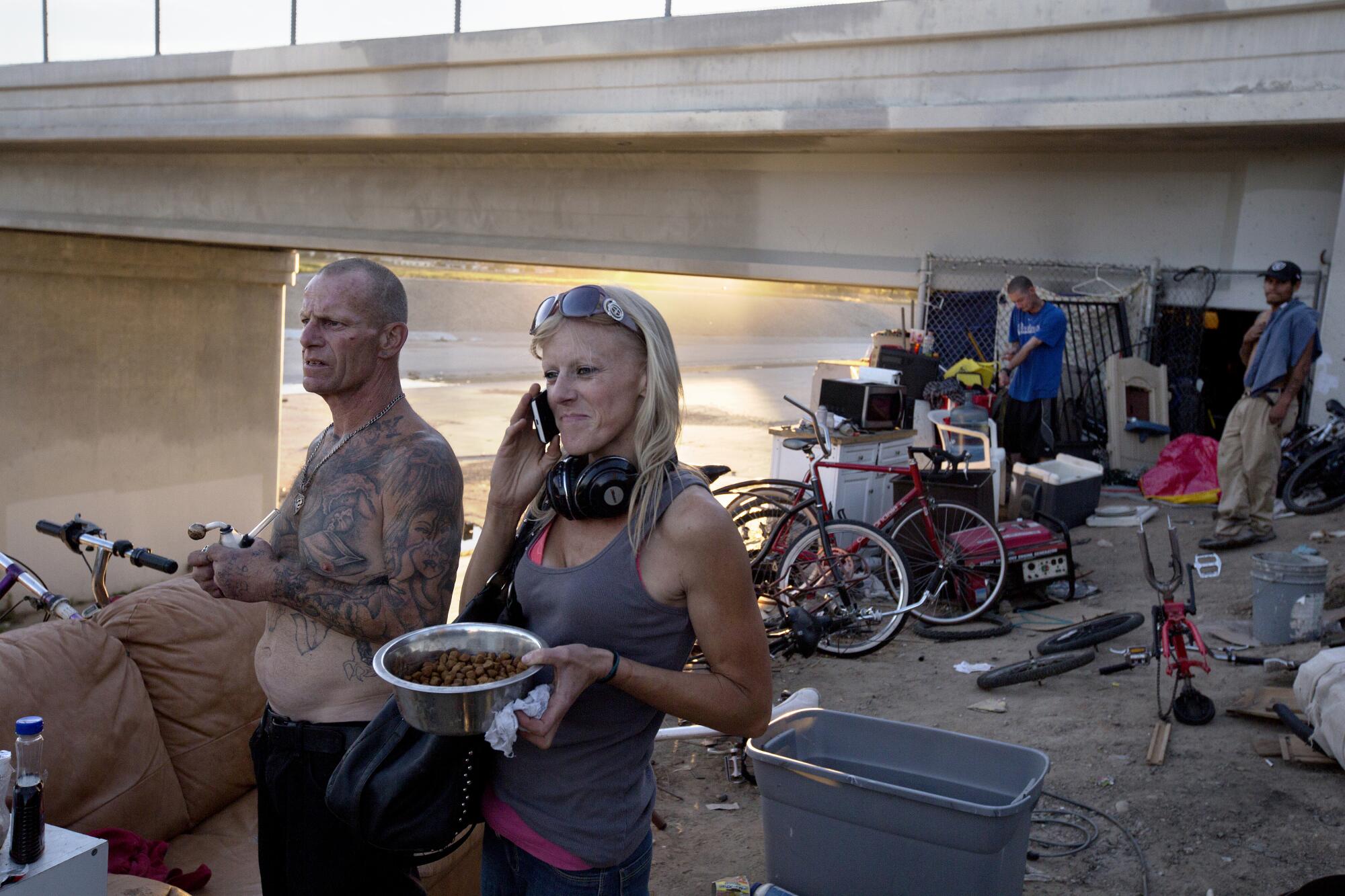
“I started doing heroin at 17. I did it enough so I fell in love with it. And it’s been goddamn curse ever since.”
— Kenneth Colato
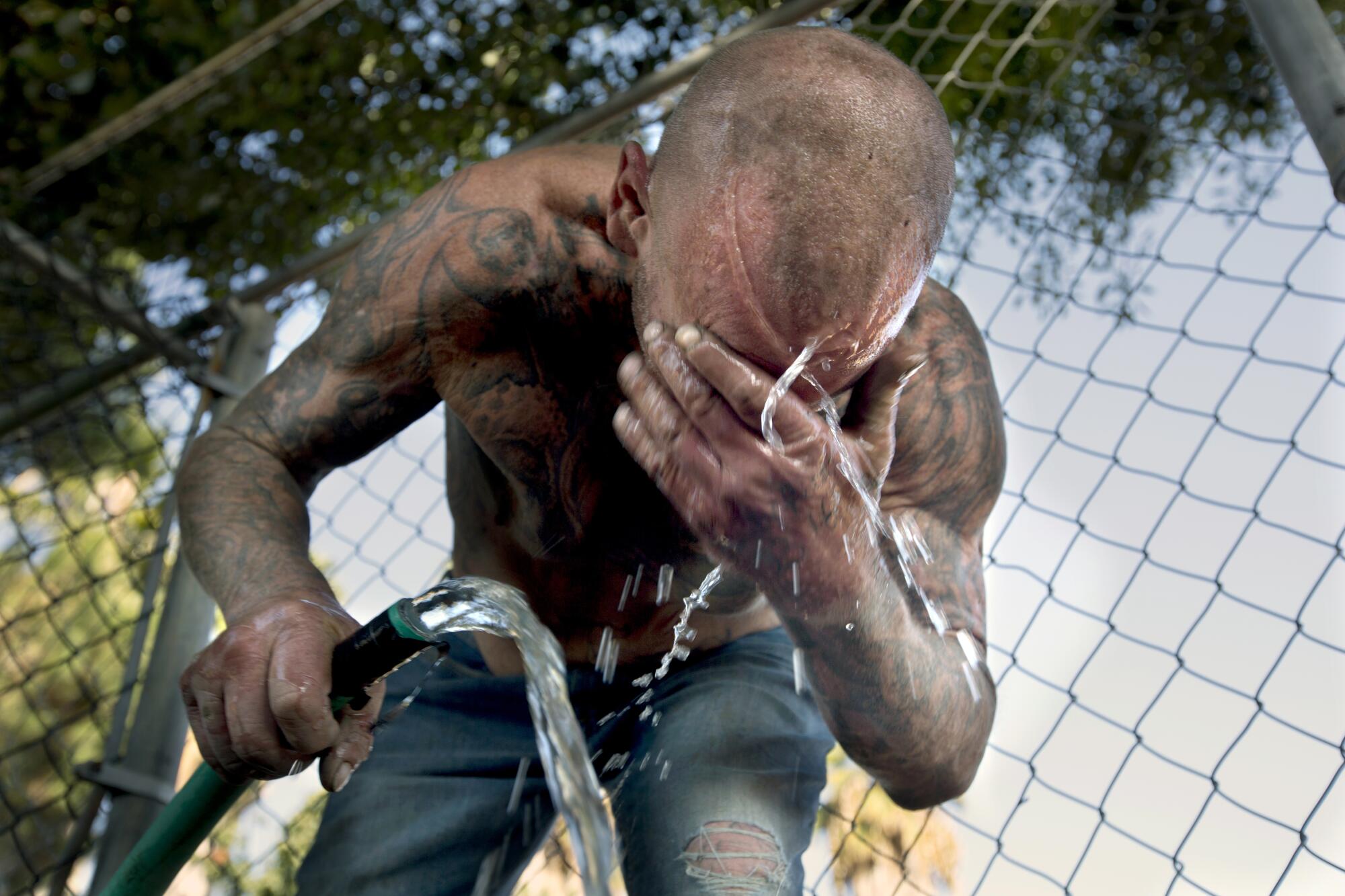
“To live is to struggle … financially, mentally, emotionally.”
— Jesus Saavadera
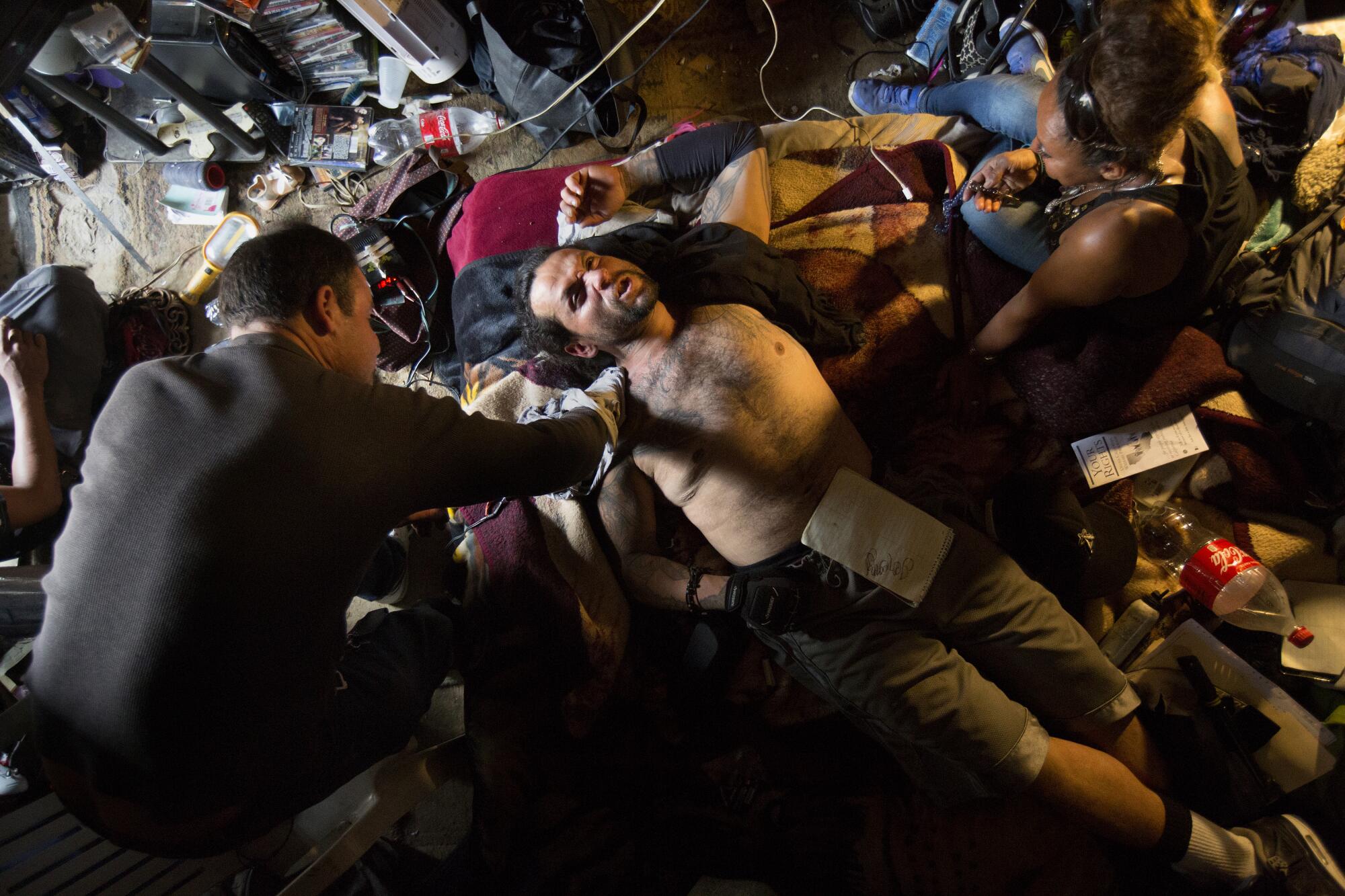
“I made some mistakes in my life I regret. Can I change them? I can’t. What is done is done. I just got to learn how to accept it and revise it. We’re only human. We make mistakes.”
— Jesus Saavadera
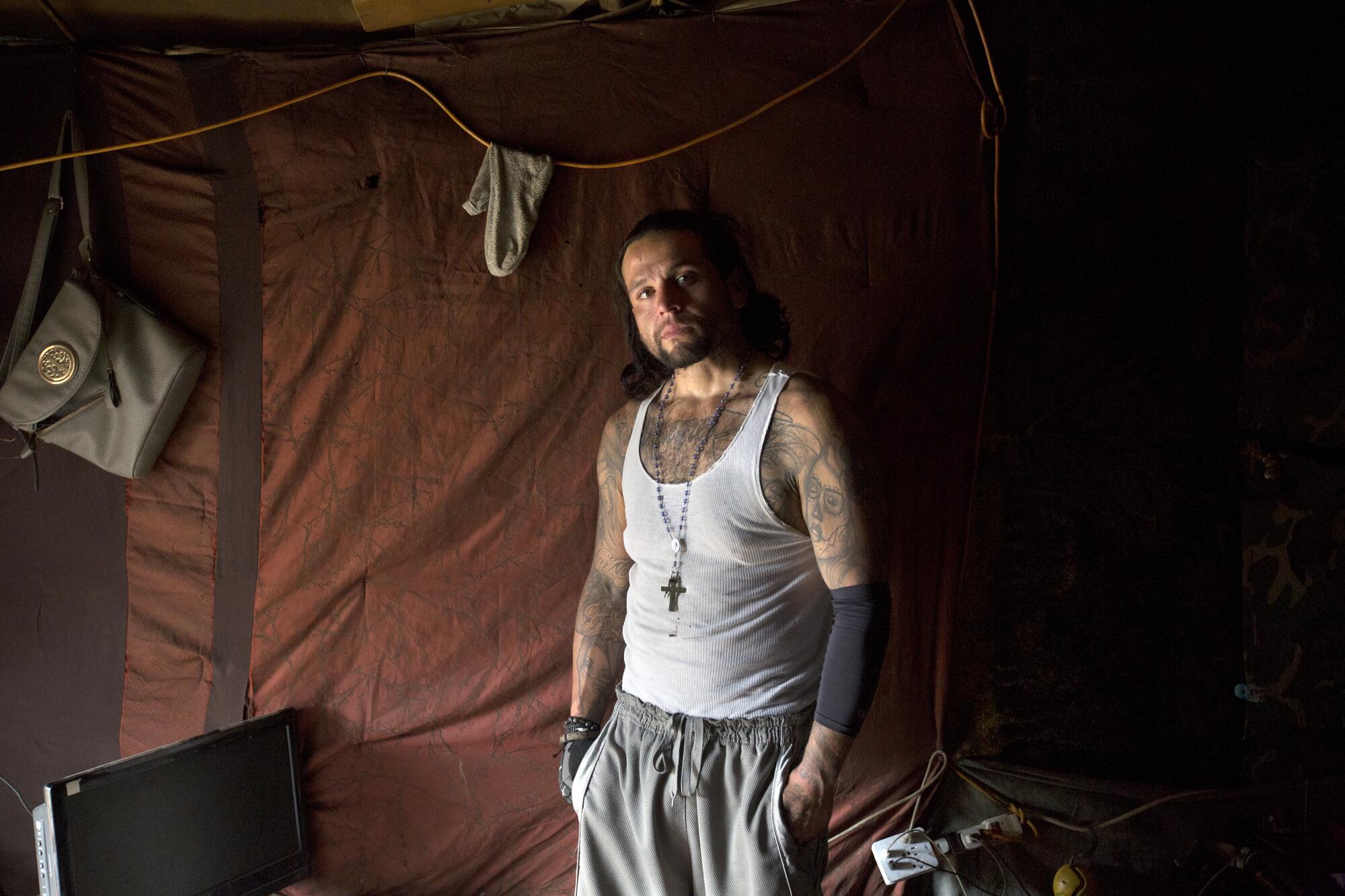
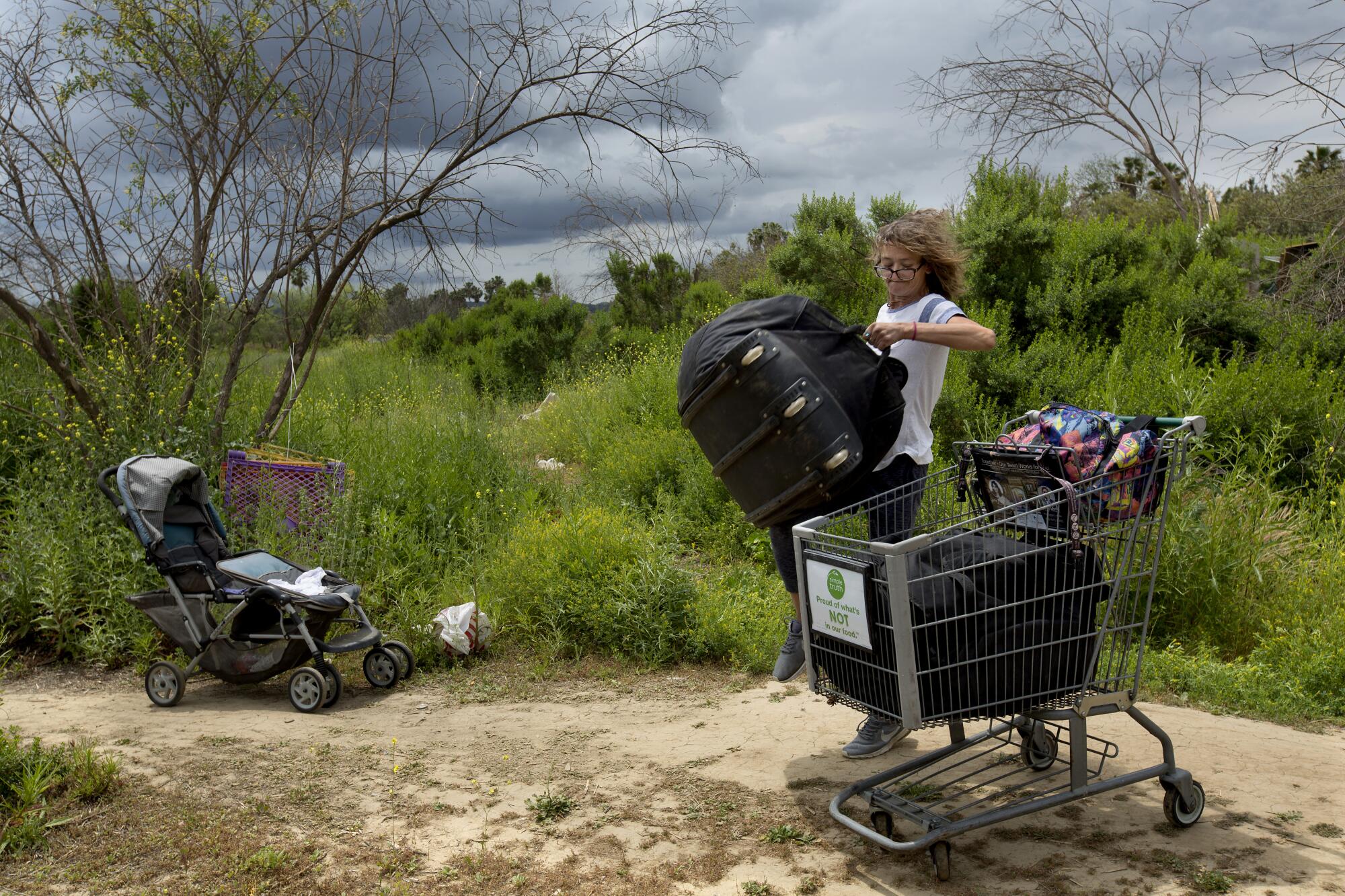
“I try to tell them that we’re homeless and we need to help each other. But no, they’ll come steal your bike at night and then come the next day and sit at your breakfast table.”
— Elizabeth Bolton
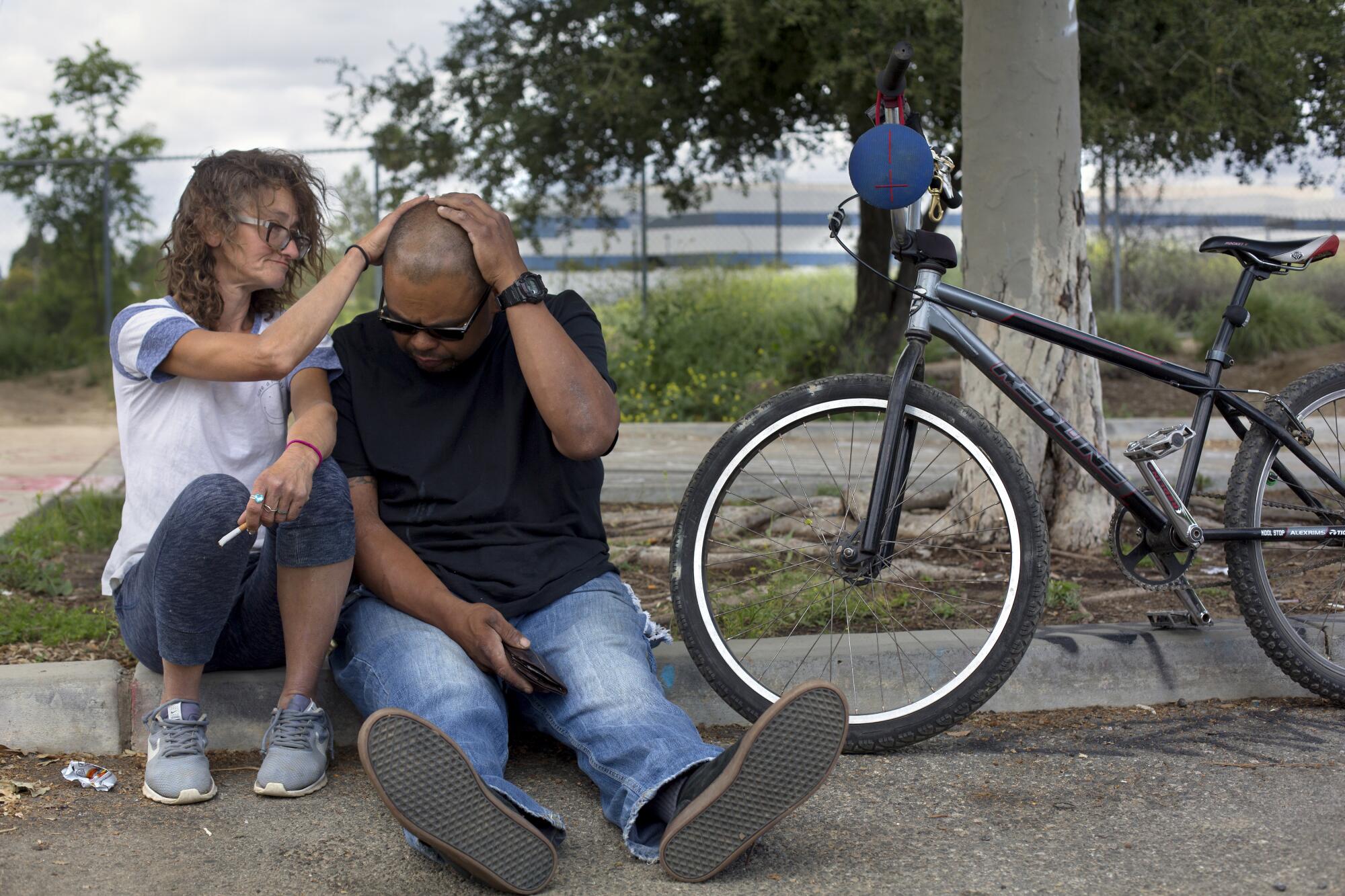
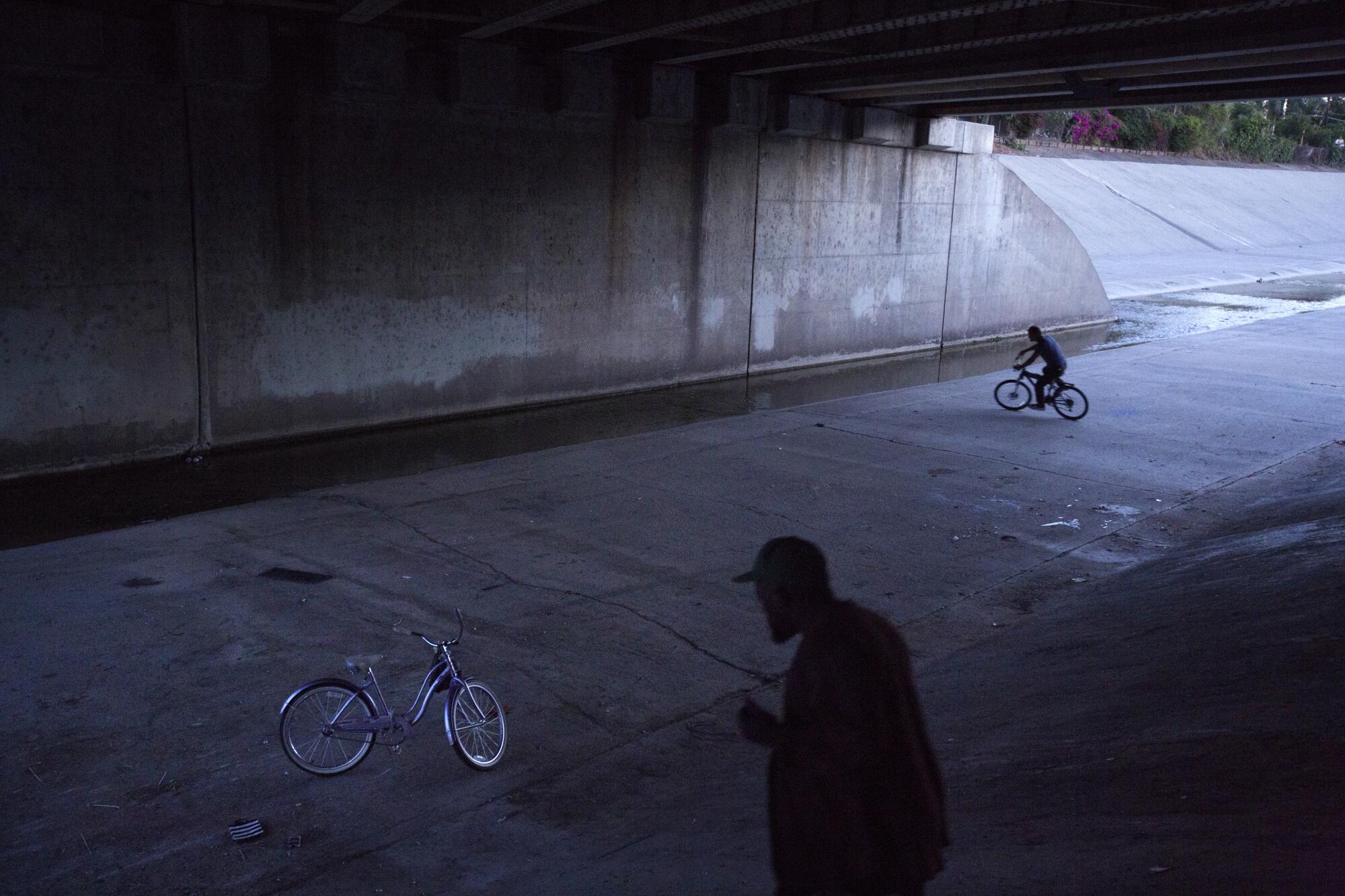
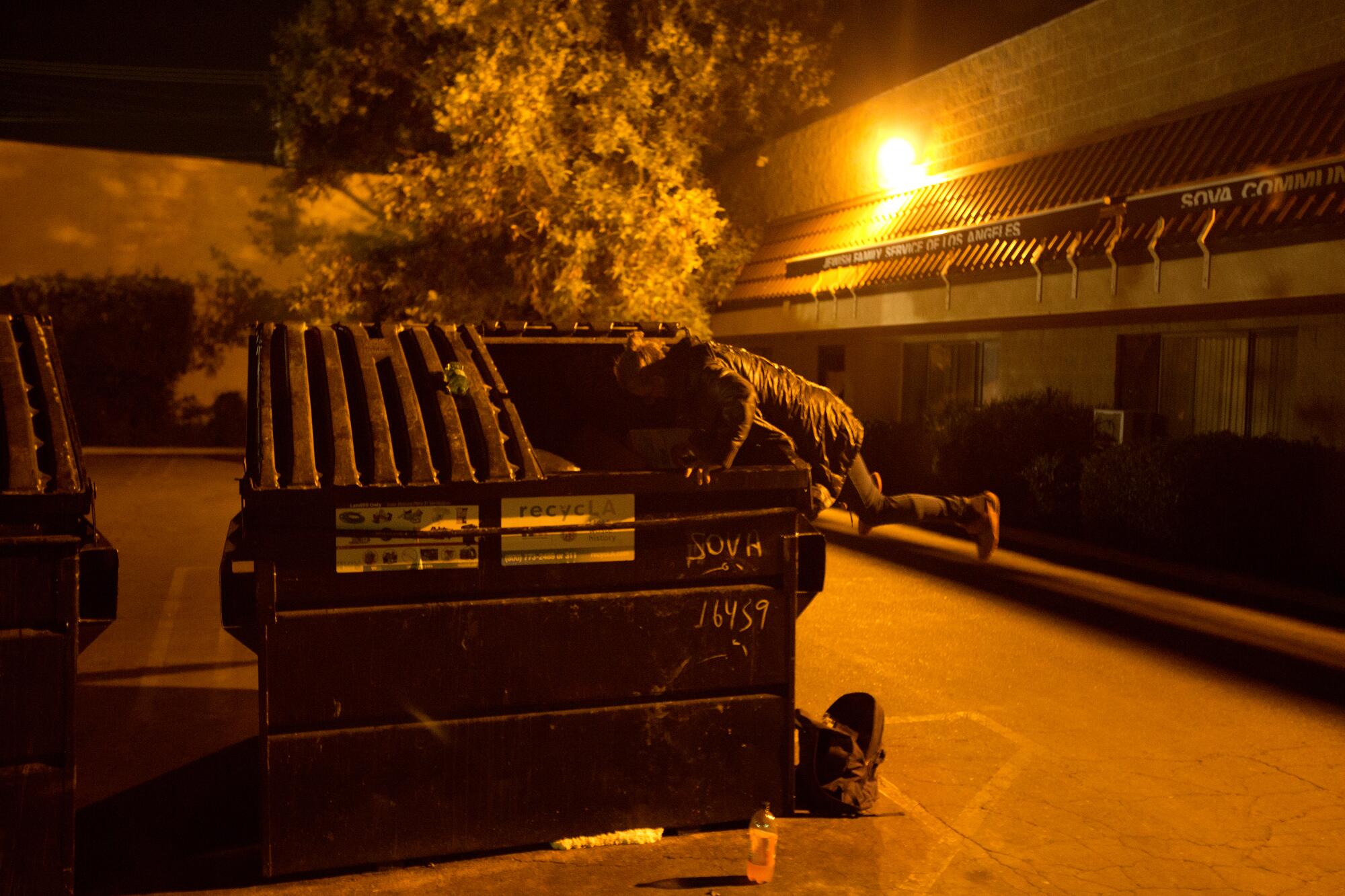
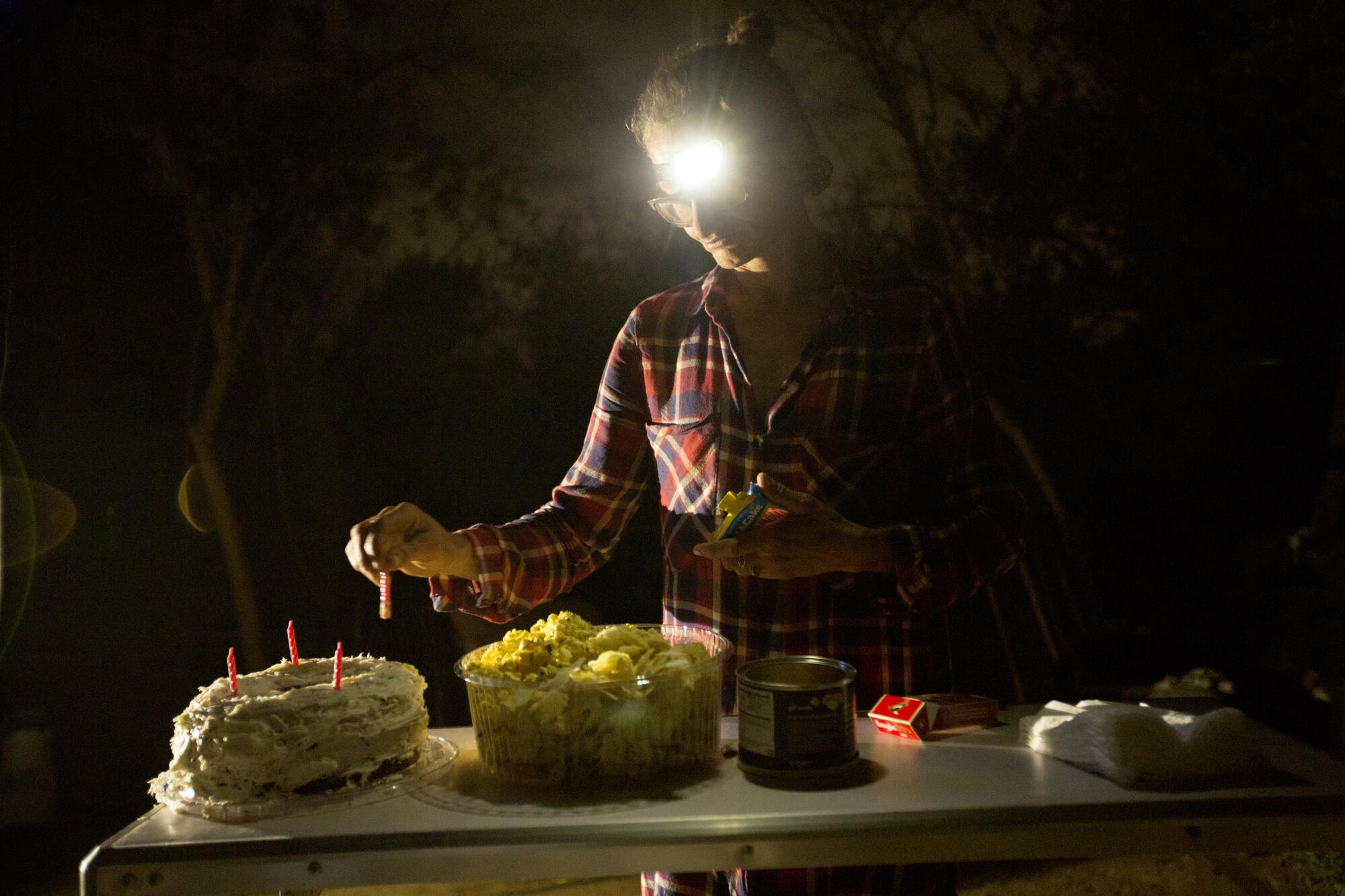
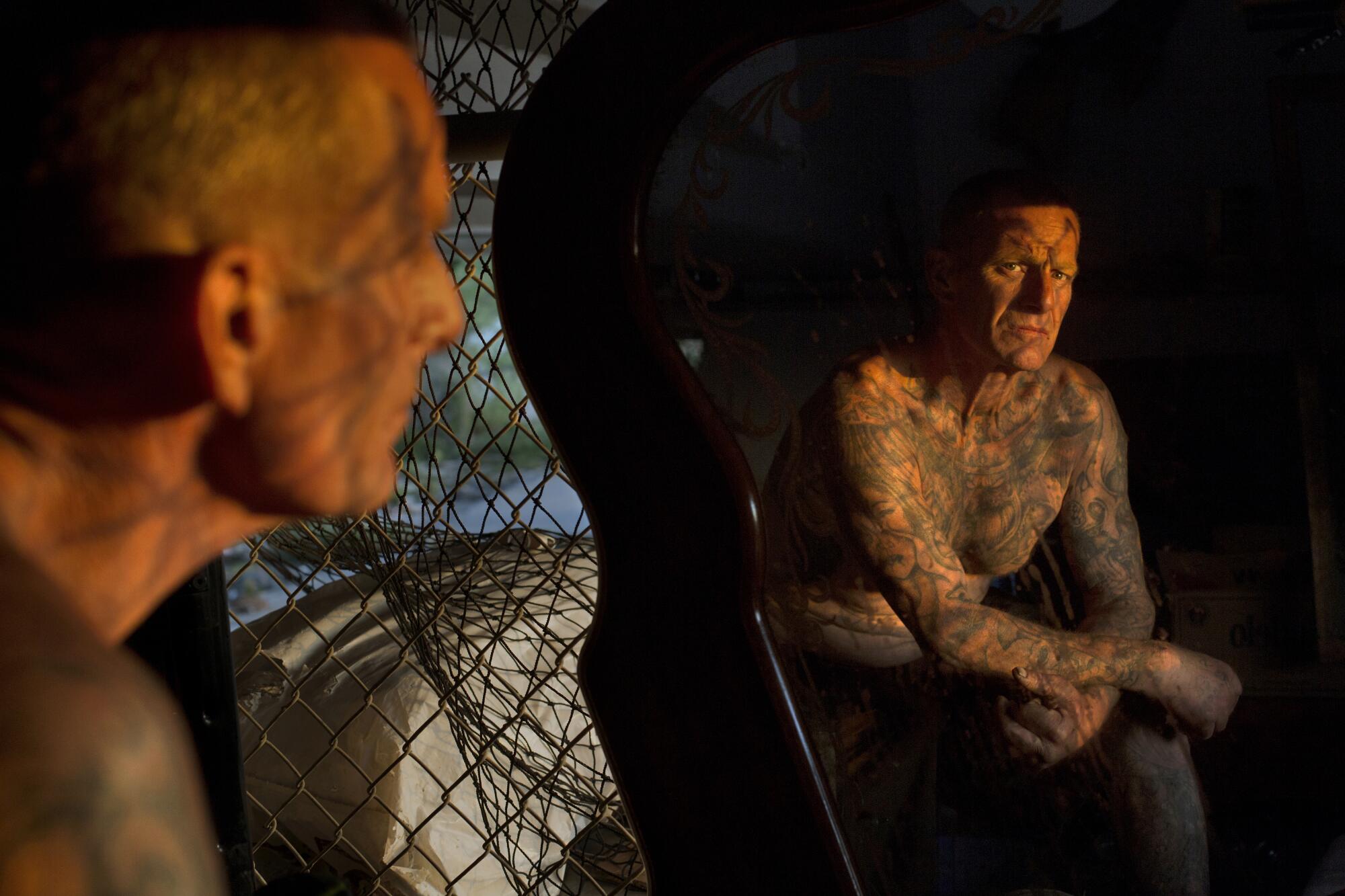
“I ended up down here at this river. This place is something else. You stay down here long enough, dude, and you turn mean and angry. It holds you here, there’s a serenity to it.”
— Kenneth Colato
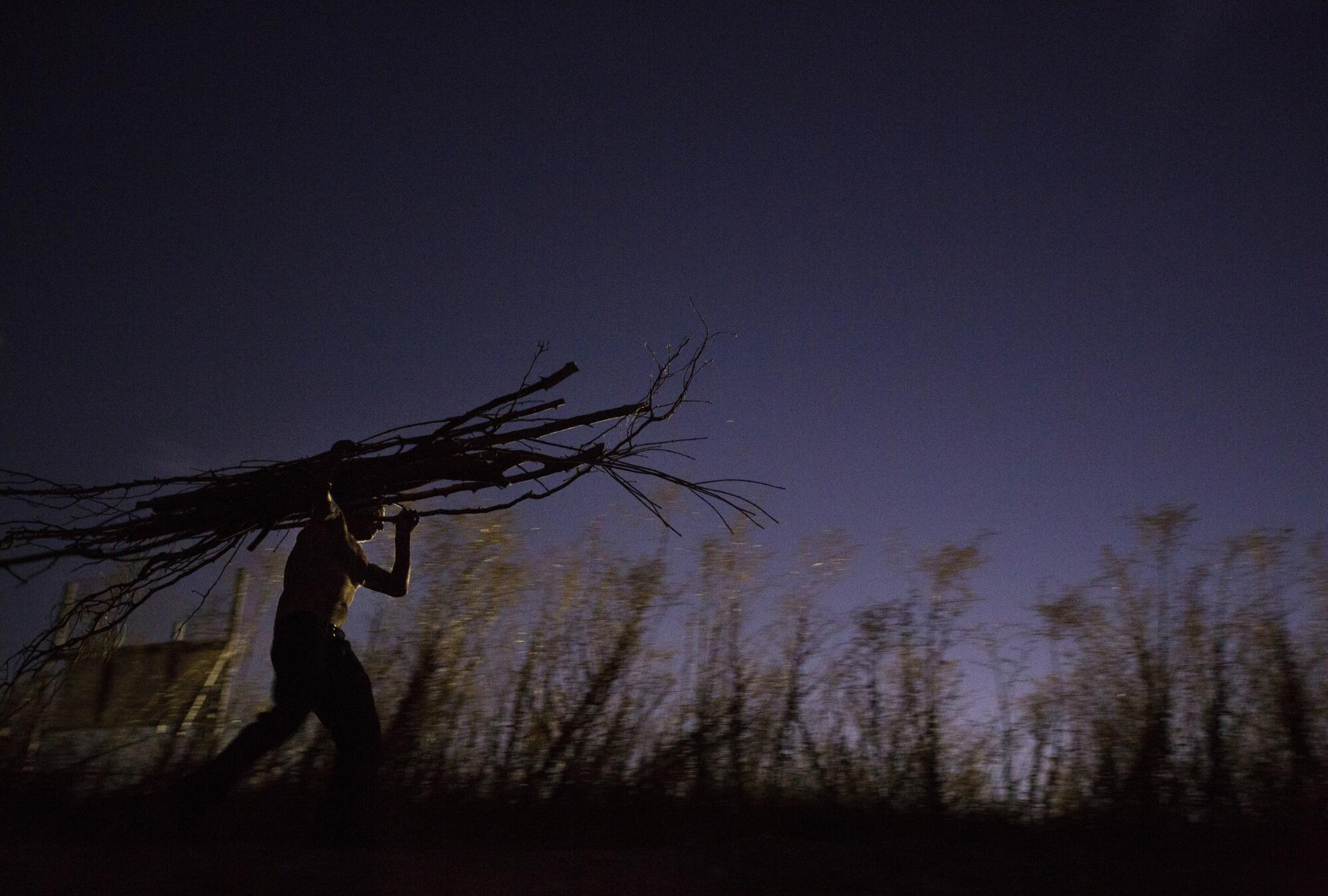
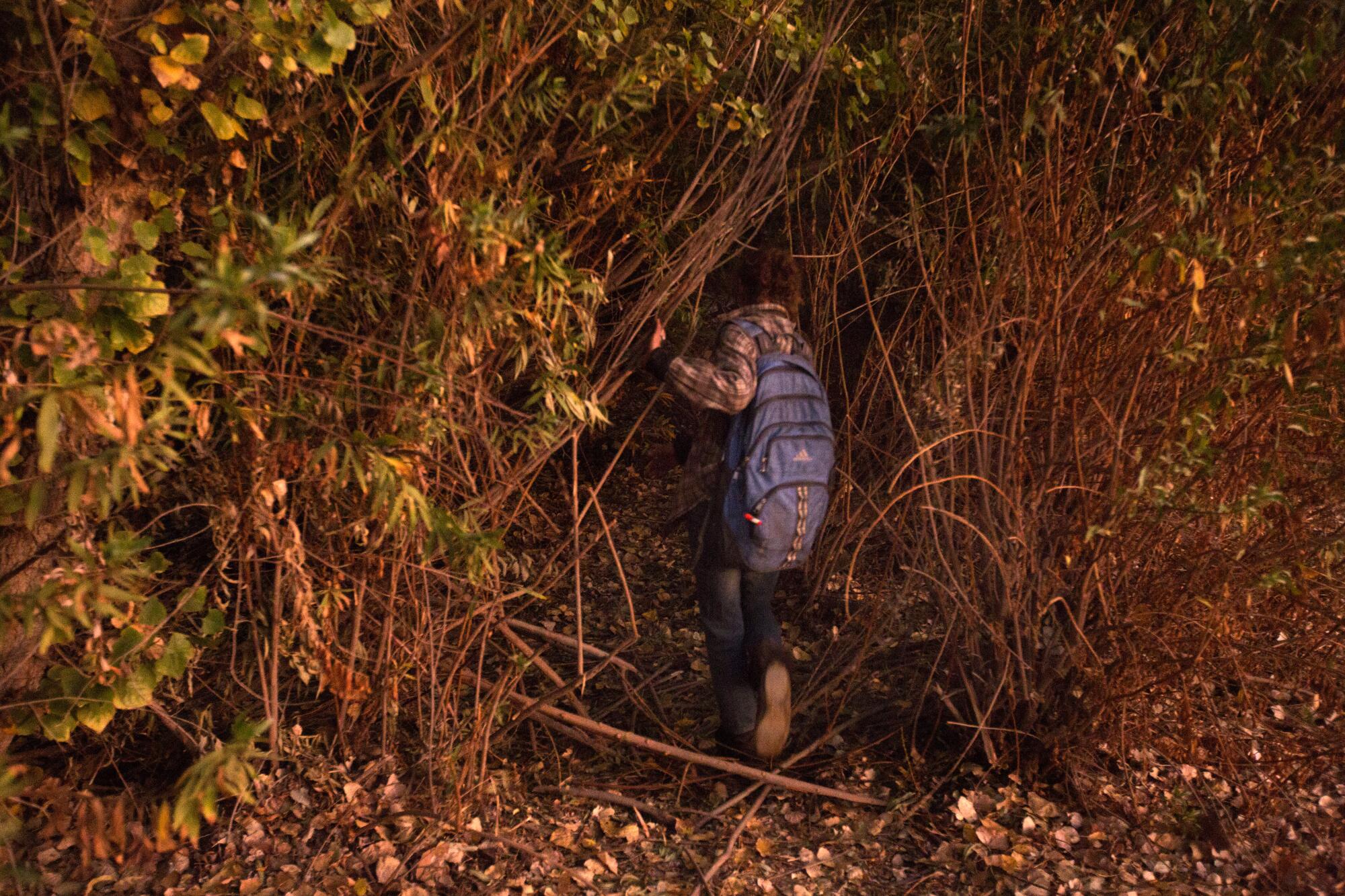
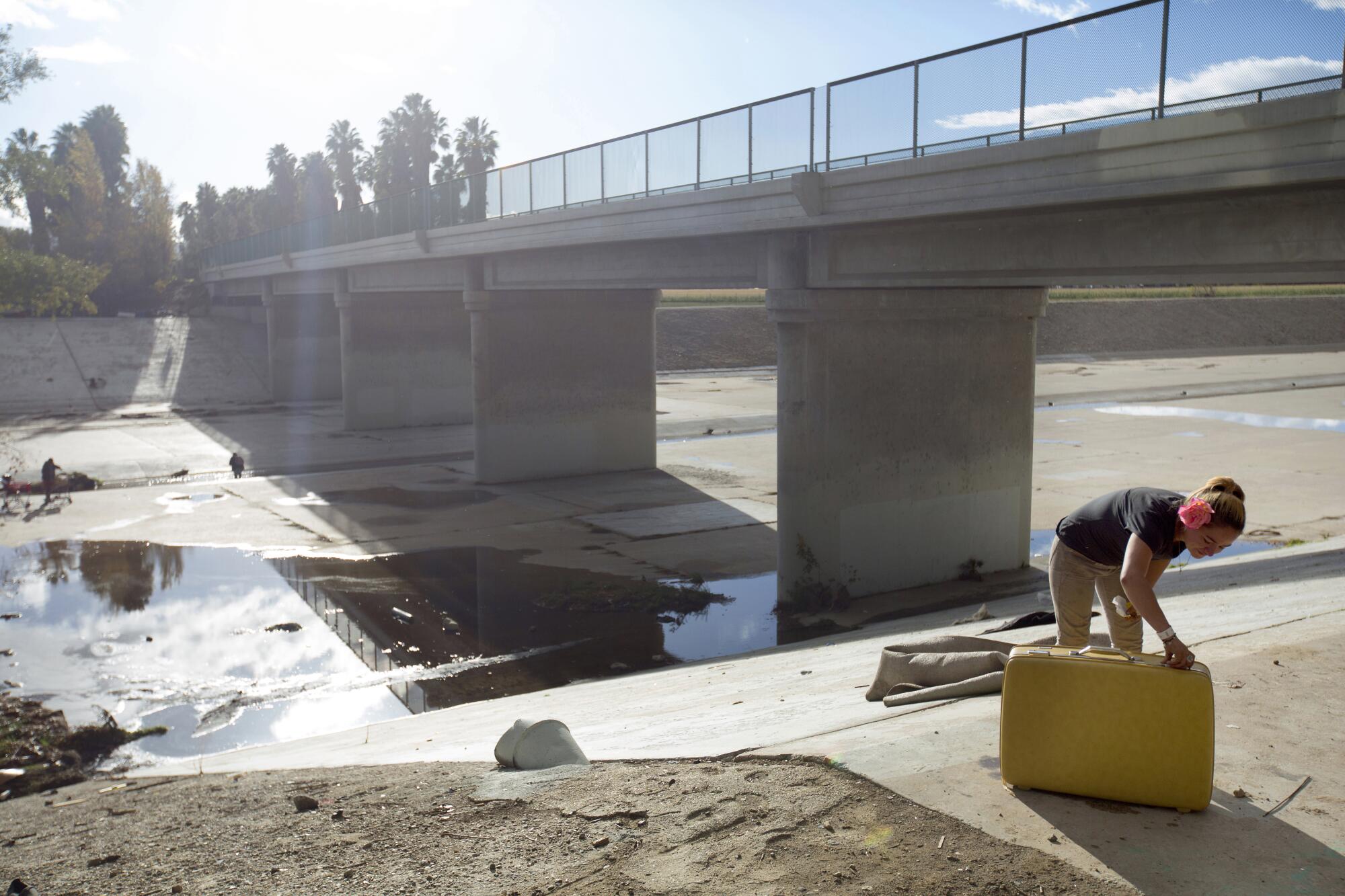
“Over there it was just us. Everyone had each other’s back over there. Yeah, we had our differences, we’re people, but when it came down to it we were all there for each other, for the most part.”
— Lauren
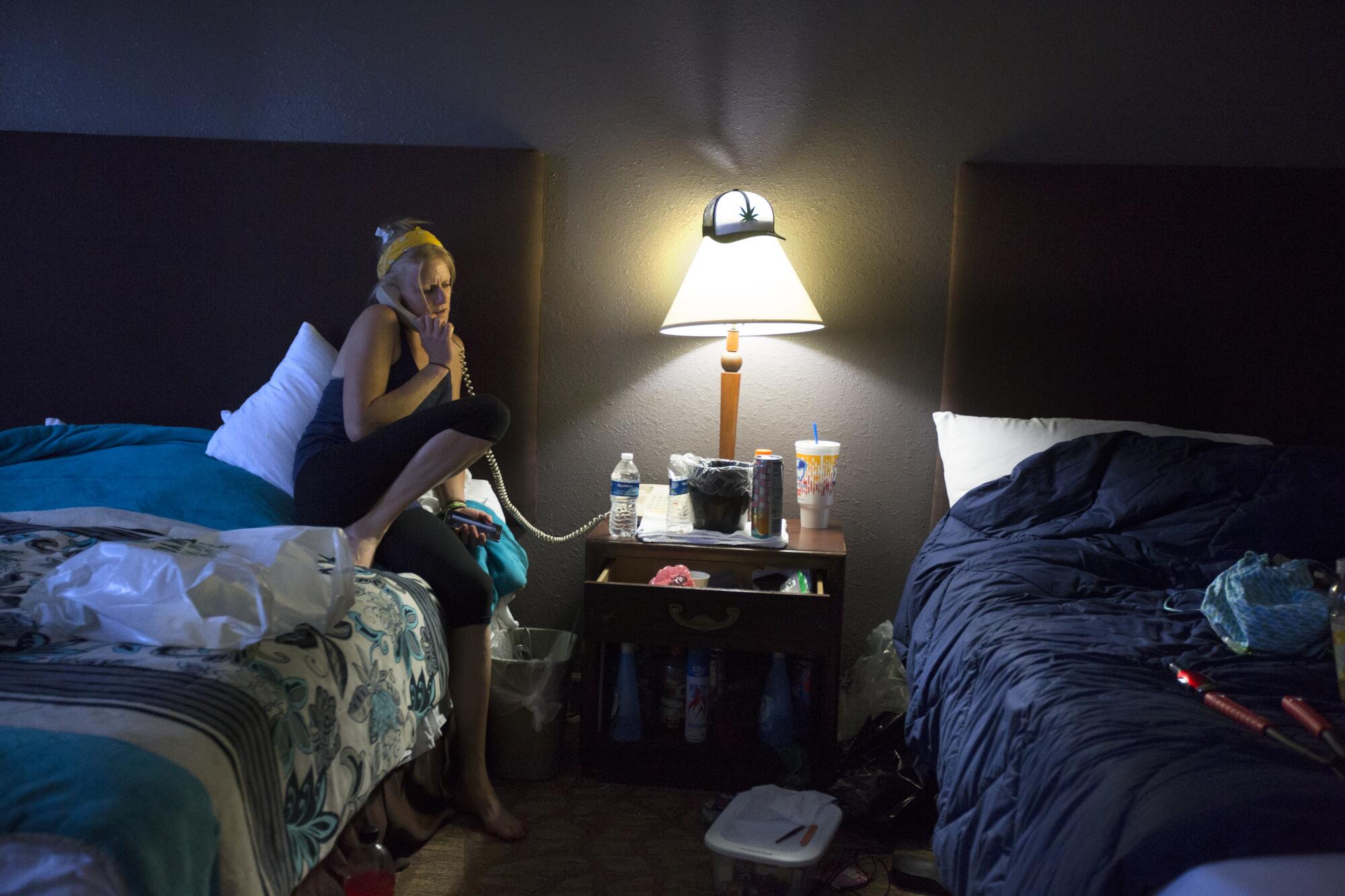
“Love is one of the only emotions that will not die. That’s what everybody searches for, to be loved.”
— Kenneth Colato
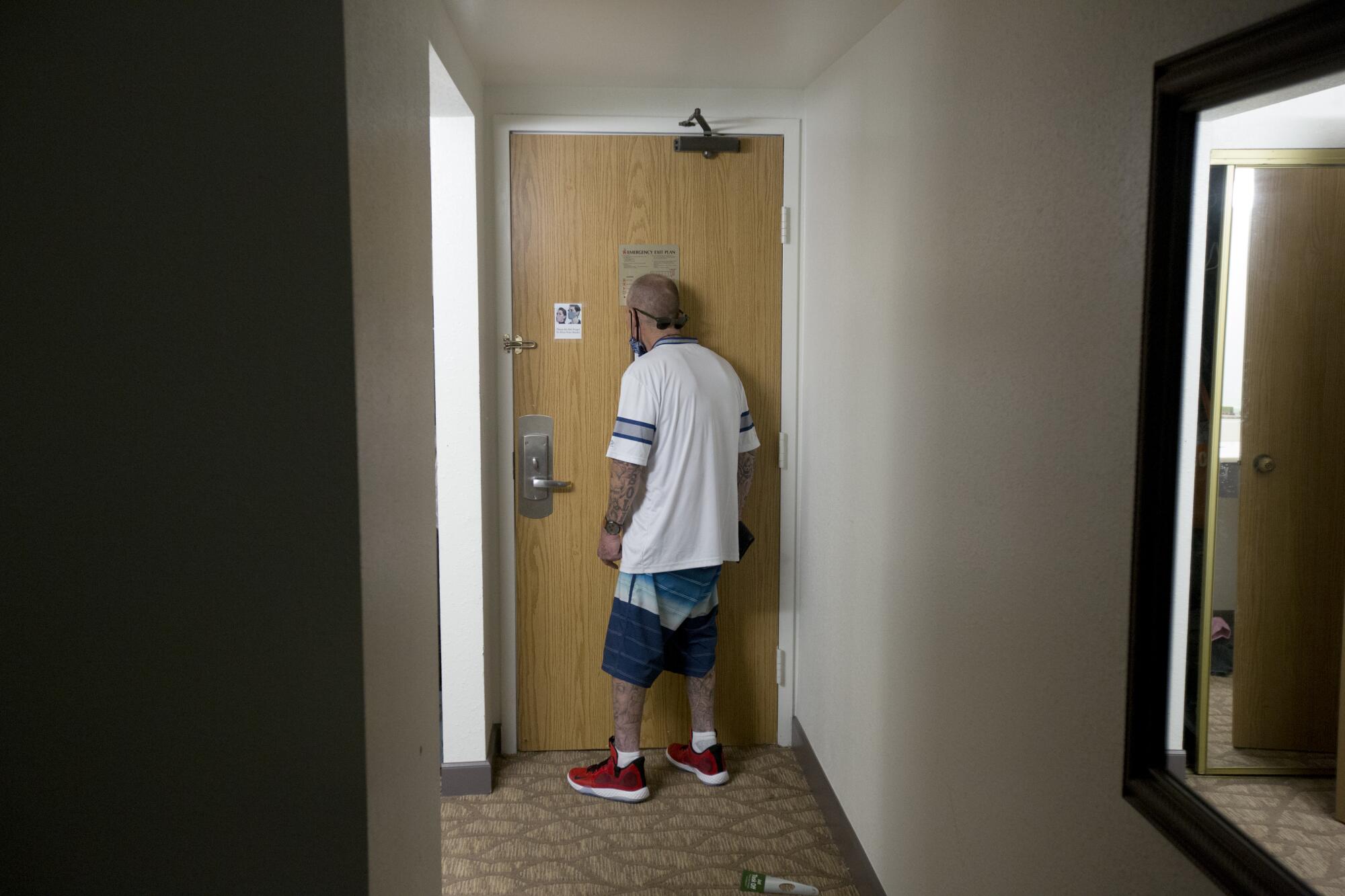
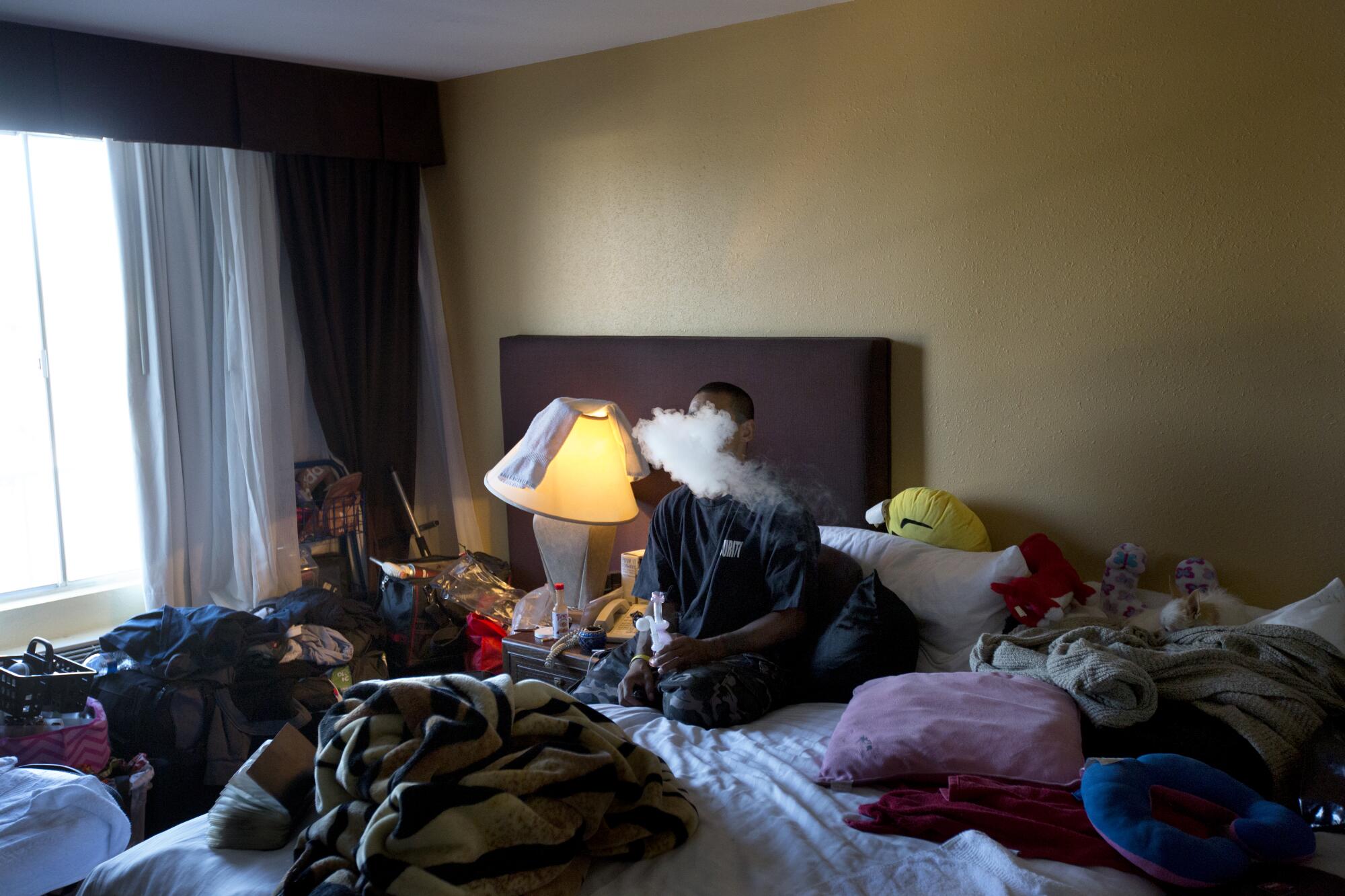
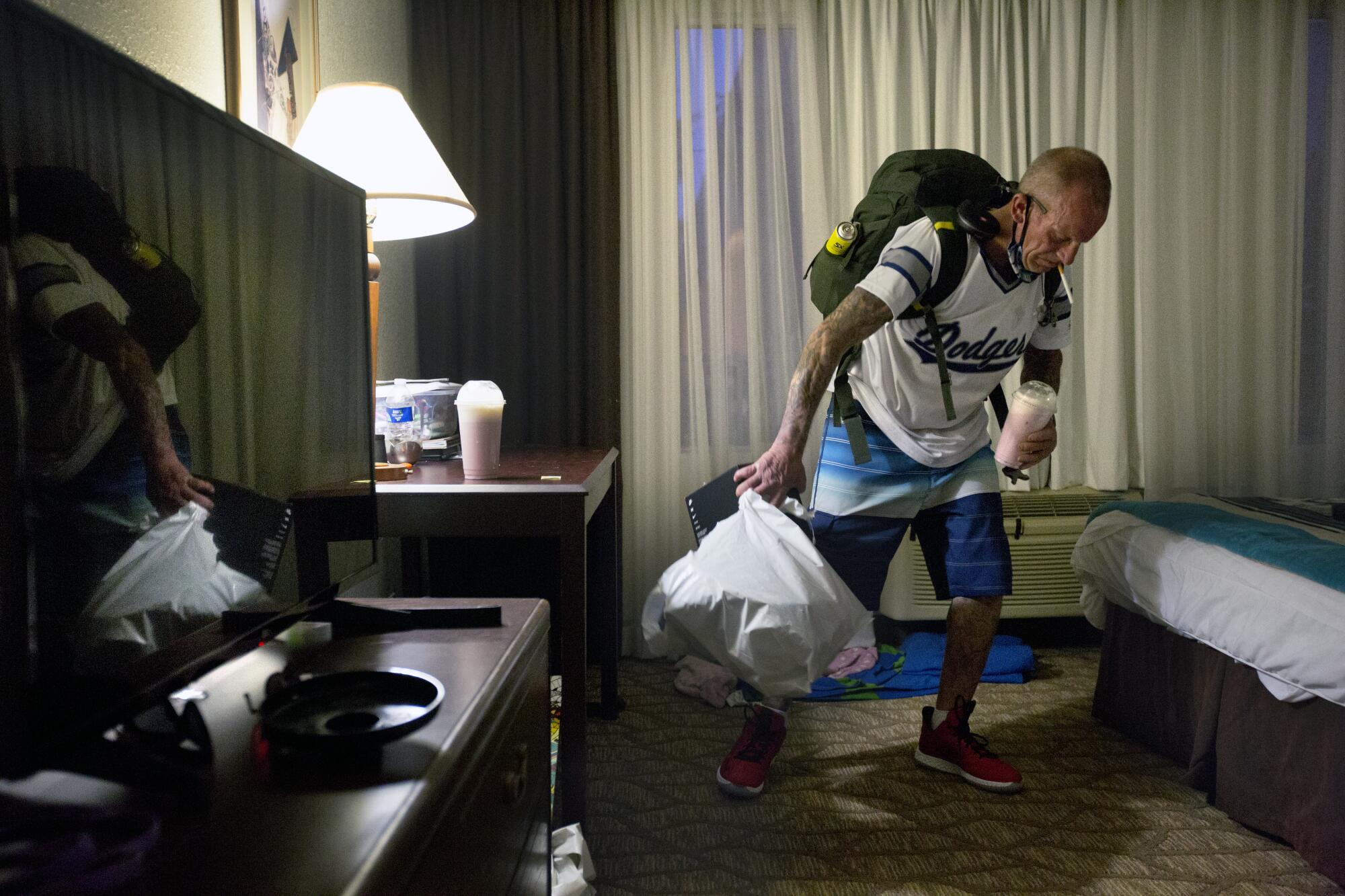
More to Read
Sign up for Essential California
The most important California stories and recommendations in your inbox every morning.
You may occasionally receive promotional content from the Los Angeles Times.







